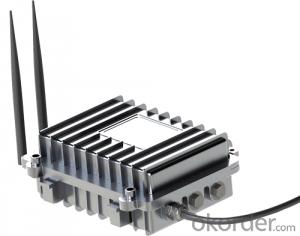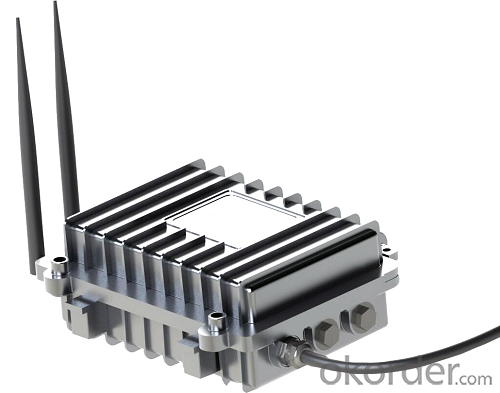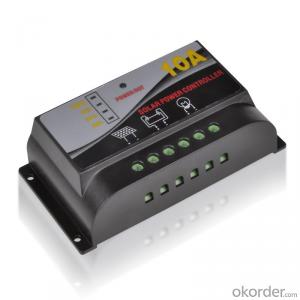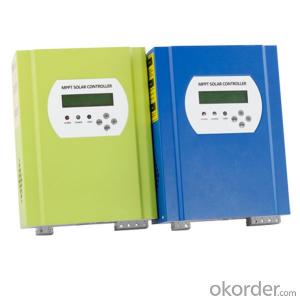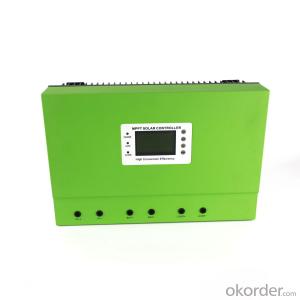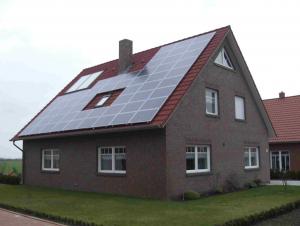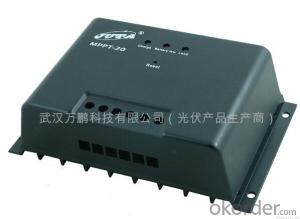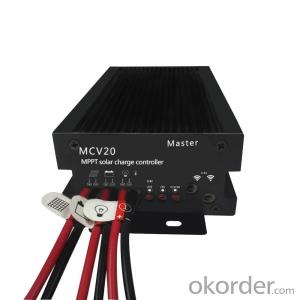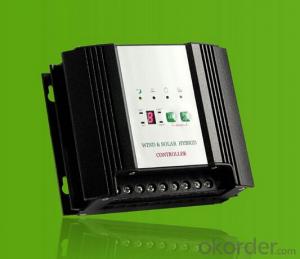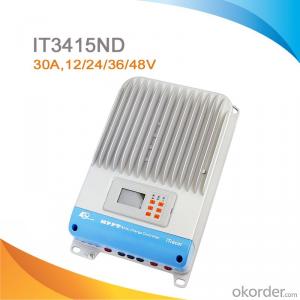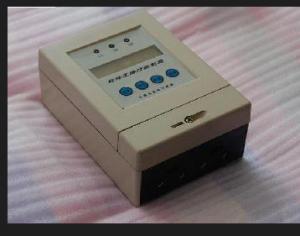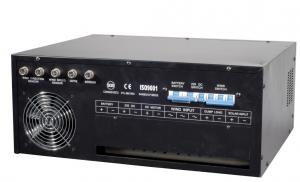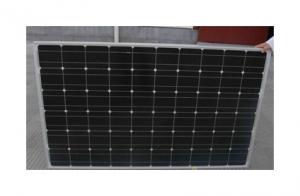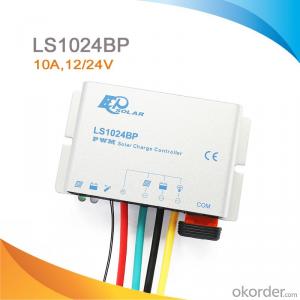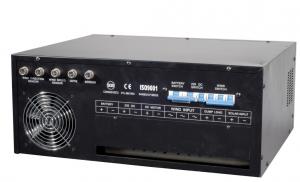IoT Wireless Centralize Controller Remote Monitor System MPPT Solar Charge Controllers 20A
- Loading Port:
- China main port
- Payment Terms:
- TT OR LC
- Min Order Qty:
- 1 pc
- Supply Capability:
- 10000 pc/month
OKorder Service Pledge
OKorder Financial Service
You Might Also Like
1. Features :
*Used GPRS communicate,support 850/900/1800/1900MHz four bands.
*Collection the data of single lamp, protocol conversion, data uploaded to the monitoring system, sending commands to the single lamp controller.
*Combined GPRS communication technology, remote monitoring anytime and anywhere.
*Used zigBee wireless mesh networking technology, support unicast and broadcast mode.
*The standard of industrial products, industrial grade aluminum alloy shell, anti-interference, durable, easy to install.
*The intelligent concentrator routing algorithm
*Support SMS control and setting
*Support ASE128 encryption algorithm
*Support remote online upgrade
*Excellent electromagnetic compatibility, system can work accurately under high voltage pulse, strong magnetic and electrostatic, lightning surge and range temperature variation.
*IP65 waterproof grade
2. Technical parameters
Parameter name | GPRS Concentrator parameter value |
Mode | Depower-DTU |
Power supply | 9~30V |
Operating bands | GPRS |
modulation mode | TCP/IP |
maximum transmit power | EGSM900/GSM850 Class4(2W) |
GSM1800/GSM1900 Class1(1W) | 14≤Vmp≤35(12V), |
Reception sensitivity | <-107dBm |
Wireless | 50Ω/SMA(Female head) |
line-of-sight transmission | Global |
Working temp | -30℃ ~ +75℃ |
Size(exclude antenna) | 113(mm) × 85(mm) × 43(mm) |
Weight | 0.92kg |
3. Detailed image
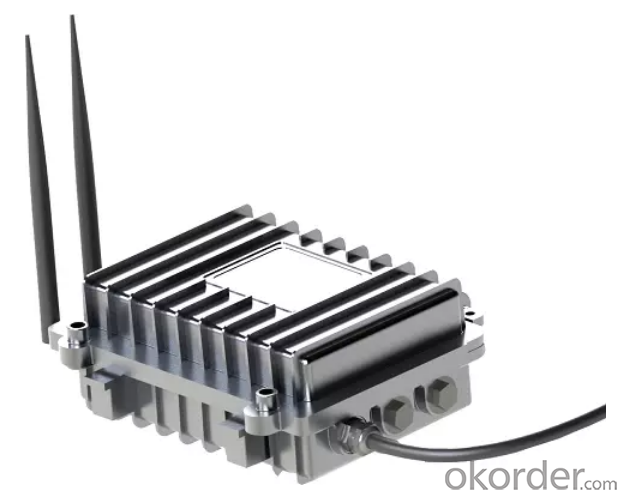
4. FAQ
Q:DO YOU HAVE ANY CERTIFICATION FOR YOUR PRODUCTS?
A:We have ISO9001:2015,CE、RoHS certifications for all of our products.
Q:DO YOU HAVE MOQ FOR PLACE ORDER?
A:Low MOQ,1pe for sample checking is availabl
- Q: Can a solar controller be used with a 12V battery bank?
- Absolutely, a 12V battery bank can certainly be utilized alongside a solar controller. In reality, the majority of solar controllers are specifically engineered to function harmoniously with 12V battery systems. By managing the transfer of energy from the solar panels to the battery bank, the solar controller guarantees efficient charging and safeguards against overcharging or harm to the batteries. Therefore, whether you possess a petite 12V battery bank for a recreational vehicle or a more substantial 12V battery bank for a solar-powered residence or off-grid setup, a solar controller is an indispensable element in overseeing the charging procedure and optimizing the lifespan of your batteries.
- Q: Can a solar controller be used with a wind turbine?
- No, a solar controller cannot be directly used with a wind turbine. Each type of renewable energy source requires a specific controller designed to handle the unique characteristics and needs of that particular source.
- Q: What is the maximum charging time a solar controller can handle?
- The maximum charging time a solar controller can handle will vary depending on the specific model and its capabilities. However, most solar controllers can handle continuous charging for extended periods of time without any issues.
- Q: Can a solar controller handle power surges from appliances?
- No, a solar controller is not designed to handle power surges from appliances. Its primary function is to regulate and control the flow of solar power from the solar panels to the battery bank or inverter, ensuring optimum charging and protection of the batteries. Power surge protection is typically handled by surge protectors or surge suppressors, which are separate devices specifically designed for this purpose.
- Q: Are there any safety precautions I should take when installing a solar controller?
- Yes, there are a few safety precautions you should take when installing a solar controller. First, ensure that the power supply to the controller is switched off before starting the installation process to avoid any electrical shocks. Additionally, it is important to follow the manufacturer's instructions and guidelines carefully to ensure proper installation and avoid any potential hazards. It is also recommended to use appropriate personal protective equipment, such as gloves and safety glasses, to protect yourself during the installation process. Lastly, if you are unsure about any aspect of the installation, it is always best to consult with a professional or seek advice from an experienced individual in the field.
- Q: What is the temperature compensation feature in a solar controller?
- The temperature compensation feature in a solar controller is a function that adjusts the charging and discharging parameters of the controller based on the temperature of the battery. This feature ensures that the battery is charged and discharged optimally, taking into account the temperature's impact on battery performance and lifespan.
- Q: Can a solar controller be used with solar panel pole mounts?
- Yes, a solar controller can be used with solar panel pole mounts. The solar controller helps regulate the charging and discharging of the battery connected to the solar panel system. It does not directly depend on the type of mount used for the solar panels, whether it's a pole mount or any other type.
- Q: How does a solar controller handle over-discharging of the battery?
- A solar controller is designed to prevent over-discharging of the battery by implementing a mechanism called low-voltage disconnect (LVD). When the battery voltage drops below a certain threshold, typically set at around 11.5 volts for a 12-volt system, the solar controller will disconnect the load from the battery. This prevents the battery from being discharged beyond a safe level, which can significantly reduce its lifespan. Once the load is disconnected, the solar controller will continue to monitor the battery voltage. When the battery voltage rises above a specific level, often set at around 12.6 volts for a 12-volt system, the solar controller will reconnect the load, allowing the battery to be used again. In addition to LVD, some advanced solar controllers may also incorporate additional features to protect the battery from over-discharging. For example, they may have battery voltage sensing capabilities to accurately measure the battery voltage and trigger the LVD at the appropriate threshold. They may also have adjustable LVD settings, allowing users to customize the disconnect and reconnect voltages based on their specific requirements. Overall, a solar controller plays a crucial role in preventing over-discharging of the battery, ensuring its longevity and optimal performance in solar power systems.
- Q: What is the maximum voltage drop allowed between the solar panels and the solar controller?
- The solar panels' and solar controller's specific system and components determine the maximum voltage drop allowed. To ensure efficient operation, it is typically advised to maintain a voltage drop below 2%. Nevertheless, this threshold can fluctuate based on factors like the distance separating the panels and controller, system size, and wiring type employed. Consulting the manufacturer's specifications and guidelines for the solar panels and controller in use is crucial for identifying the highest acceptable voltage drop.
- Q: Can a solar controller be used with gel batteries?
- Yes, a solar controller can be used with gel batteries. Gel batteries are one of the types of deep cycle batteries commonly used in solar power systems. A solar controller helps regulate the charging and discharging of the batteries, ensuring optimal performance and longevity. Therefore, it is compatible with gel batteries and can be used to effectively manage the solar power system.
Send your message to us
IoT Wireless Centralize Controller Remote Monitor System MPPT Solar Charge Controllers 20A
- Loading Port:
- China main port
- Payment Terms:
- TT OR LC
- Min Order Qty:
- 1 pc
- Supply Capability:
- 10000 pc/month
OKorder Service Pledge
OKorder Financial Service
Similar products
Hot products
Hot Searches
Related keywords
